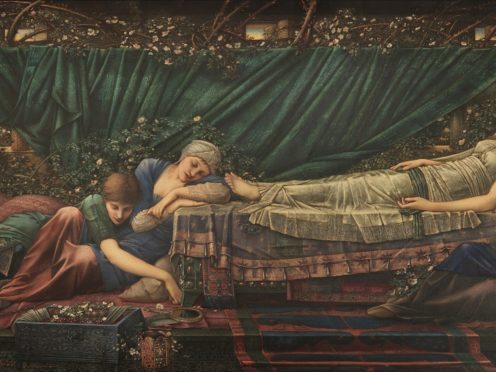Two of 19th century Pre-Raphaelite artist Edward Burne-Jones’ most celebrated collections of paintings, The Briar Rose and the unfinished Perseus series, will be shown together for the first time as part of Tate Britain’s major autumn exhibition, it has been announced.
From October 24, the museum will bring together more than 150 of Burne-Jones’ works in different media, including painting, stained glass and tapestry.
Most of the pieces that will be displayed have been loaned from private collections from around the world.
Tate Britain’s retrospective, Edward Burne-Jones: Pre-Raphaelite Visionary, will be the first major exhibition of the artist and designer’s work to be held in London for over 40 years.

It will also be the first Burne-Jones exhibition at Tate since 1933, which was held to mark the centenary of the artist’s birth.
Speaking at the press launch of the exhibition at All Saint’s Church on St Margaret’s Street in central London, Tate Britain director Alex Farquharson said: “We’re so fortunate in having been able to gather all of the key works we most wanted for this exhibition.”
“I look forward hugely to unveiling what promises to be a fantastic highlight of our Tate Britain calendar later this year.”
All four canvases in The Briar Rose series will be shown in a museum setting for the first time. They depict the northern fairy tale of Sleeping Beauty.
The Perseus series portrays the Greek myth in which the ritual hero slays Medusa and saves Andromeda from a sea monster.
When asked why she thought the exhibition would be a success, curator Alison Smith said: “Whenever there have been exhibitions on the Pre-Raphaelites and Burne-Jones, they have always been very popular with the general public.
Press launch at All Saints Church on Margaret Street in central London of Tate Britain's major Edward Burne-Jones autumn exhibition. pic.twitter.com/J4ph8Euxcn
— Andrew Arthur (@crimsonchinblog) May 30, 2018
“I think whereas art critics might have moved away from Burne-Jones’ art, thinking it’s perhaps a bit religious or too literary, amongst people in general there has always been a real interest in his works.
“Now is a really good time to rediscover Burne-Jones. Particularly when you think of contemporary art practice, there is great interest in decorative arts and craftsmanship.
“Also, people’s fascination with fantasy and story-telling. You think of Tolkien, the films of Lord Of The Rings, Game Of Thrones – it’s pure Burne-Jones!”
Edward Burne-Jones: Pre-Raphaelite Visionary will run at Tate Britain from October 24 until February 24 2019.
